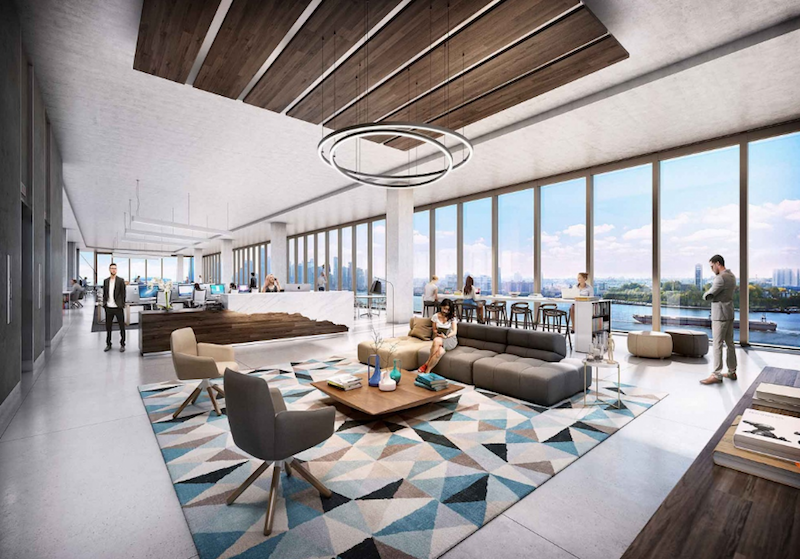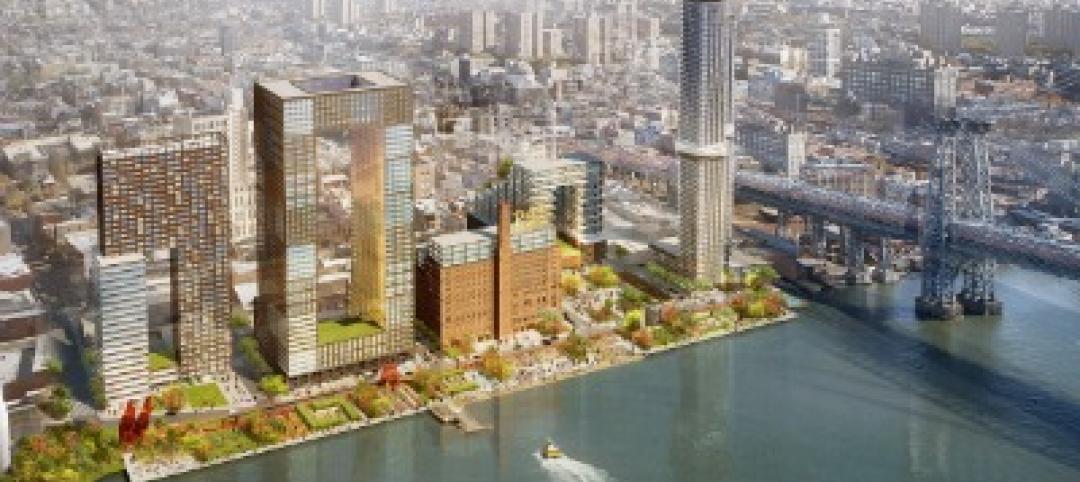When designing a new office building located between Manhattan’s High Line Park and the Hudson River, Studio Gang wanted to protect the views between the park and the river and block as little sunlight as possible. The firm’s solution to this problem was to take on the sun as a freelance designer.
Expanding upon its “solar carving” design strategy, Studio Gang used incident angles of the sun’s rays to sculpt the Solar Carve Tower’s form. The result is a gem-like façade that allows light, fresh air, and river views to reach the park.
At any point during the year, the sun’s rays will be able to pour around the building’s unique façade, which takes the shape of an hourglass made up of smaller diamond-shaped carvings, to reach the surrounding park and green space.
On its website, Studio Gang says, “Solar Carve Tower explores how shaping a building in response to solar access and other site-specific criteria can expand its architectural potential.”
Each of the building’s floors will provide office space ranging from 13,700 sf to 14,200 sf, the New York Post reports. 16-foot-high floor-to-ceiling windows will provide each floor with natural light, views, and connectivity to the natural environment. Solar Carve Tower will also include 17,000 sf of ground floor retail. In total, the new tower will provide 166,750 sf of space.
The project is targeting LEED Gold.
 Rendering courtesy of Studio Gang.
Rendering courtesy of Studio Gang.
 Rendering courtesy of Studio Gang.
Rendering courtesy of Studio Gang.
 Rendering courtesy of Studio Gang.
Rendering courtesy of Studio Gang.
 Rendering courtesy of Studio Gang.
Rendering courtesy of Studio Gang.
 Image courtesy of Studio Gang.
Image courtesy of Studio Gang.
Related Stories
| Apr 24, 2013
Los Angeles may add cool roofs to its building code
Los Angeles Mayor Antonio Villaraigosa wants cool roofs added to the city’s building code. He is also asking the Department of Water and Power (LADWP) to create incentives that make it financially attractive for homeowners to install cool roofs.
| Apr 22, 2013
Top 10 green building projects for 2013 [slideshow]
The AIA's Committee on the Environment selected its top ten examples of sustainable architecture and green design solutions that protect and enhance the environment.
| Apr 19, 2013
7 hip high-rise developments on the drawing board
Adrian Smith and Gordon Gill's whimsical Dancing Dragons tower in Seoul is among the compelling high-rise projects in the works across the globe.
| Apr 15, 2013
Advanced lighting controls and exterior tactics for better illumination - AIA/CES course
To achieve the goals of sustainability and high performance, stakeholders in new construction and renovation projects must rein in energy consumption, including lighting. This course presents detailed information about lighting control strategies that contribute to energy efficient buildings and occupant well-being, as well as tips for lighting building exteriors effectively and efficiently.
| Apr 6, 2013
First look: GlaxoSmithKline's double LEED Platinum office
GlaxoSmithKline and Liberty Property Trust/Synterra Partners transform the work environment with the opening of Five Crescent Drive
| Apr 5, 2013
No evidence that mandatory building energy labeling improves efficiency, study says
The Building Owners and Managers Association (BOMA) International and the Greater Boston Real Estate Board (GBREB) released a report, “An Economic Perspective on Building Labeling Policies,” that questions the efficacy of mandatory building energy labeling.

















